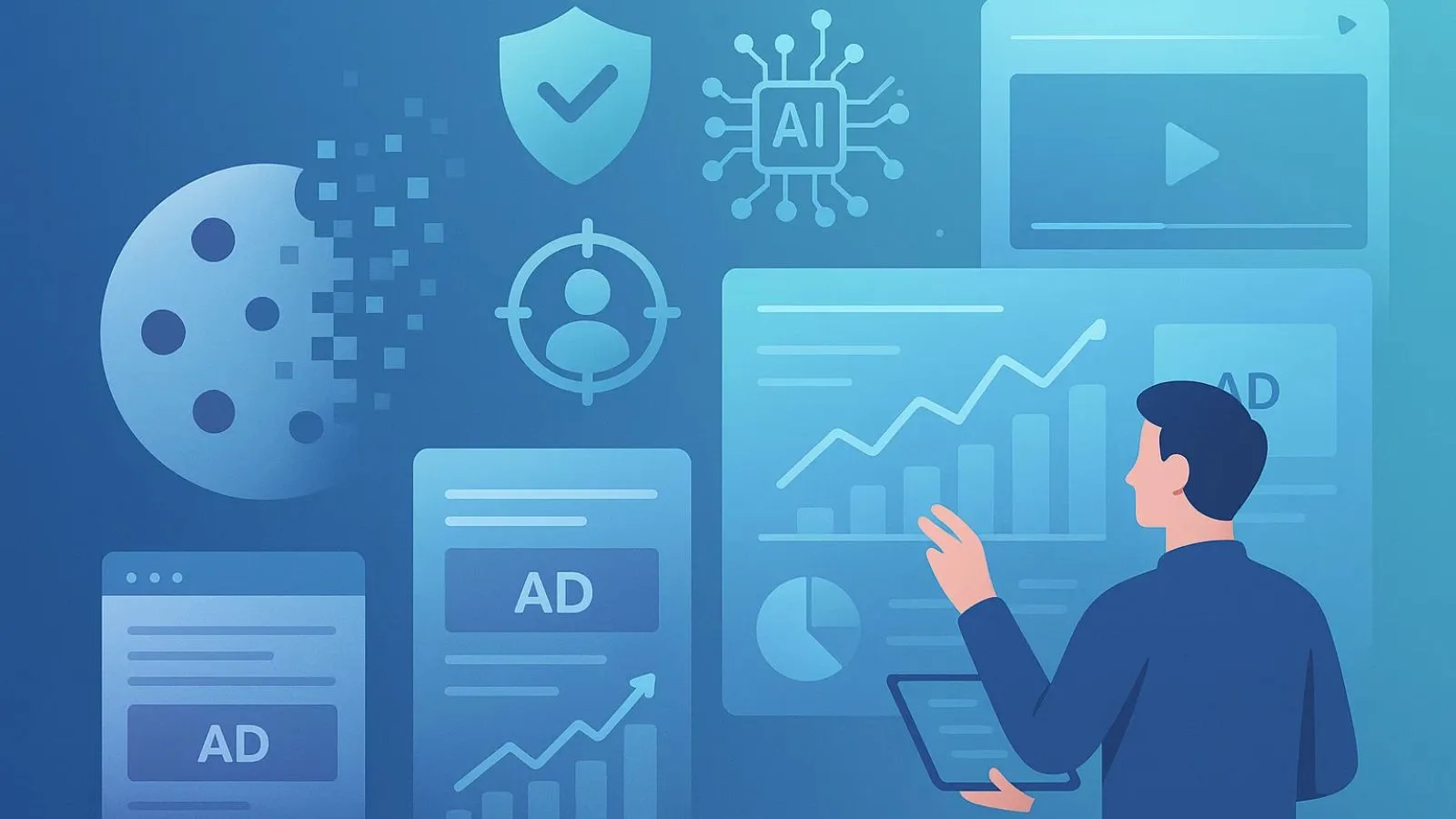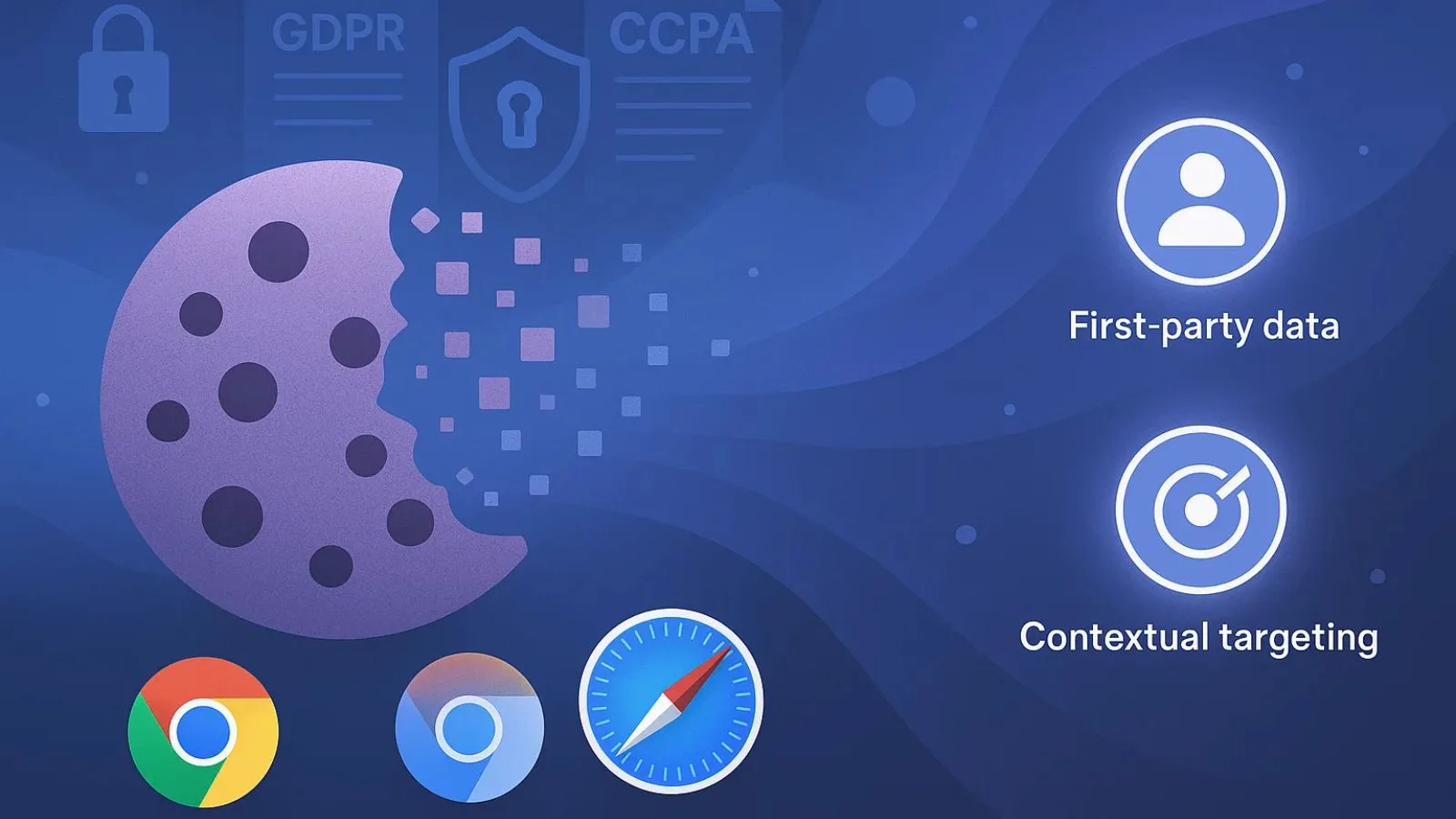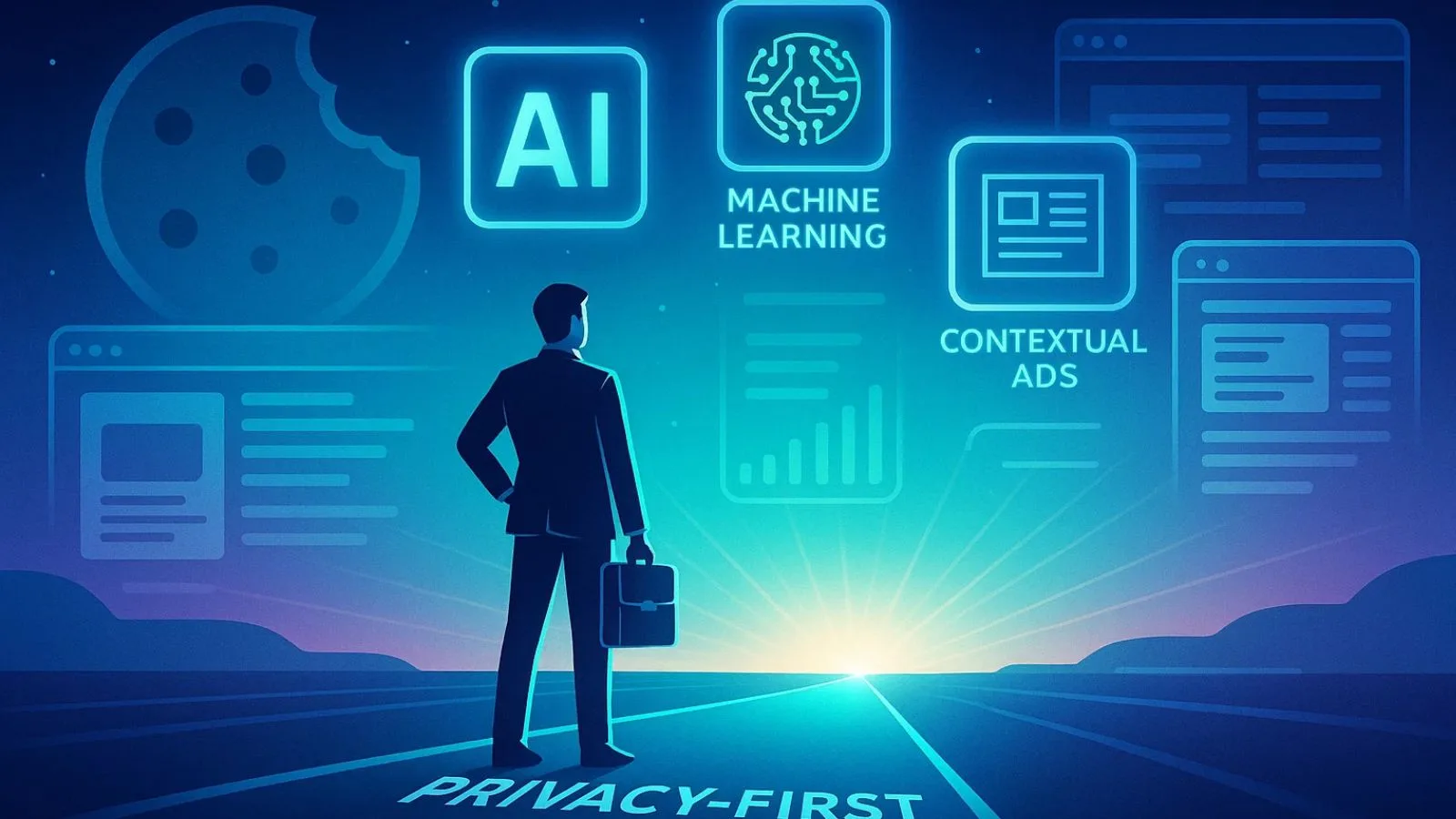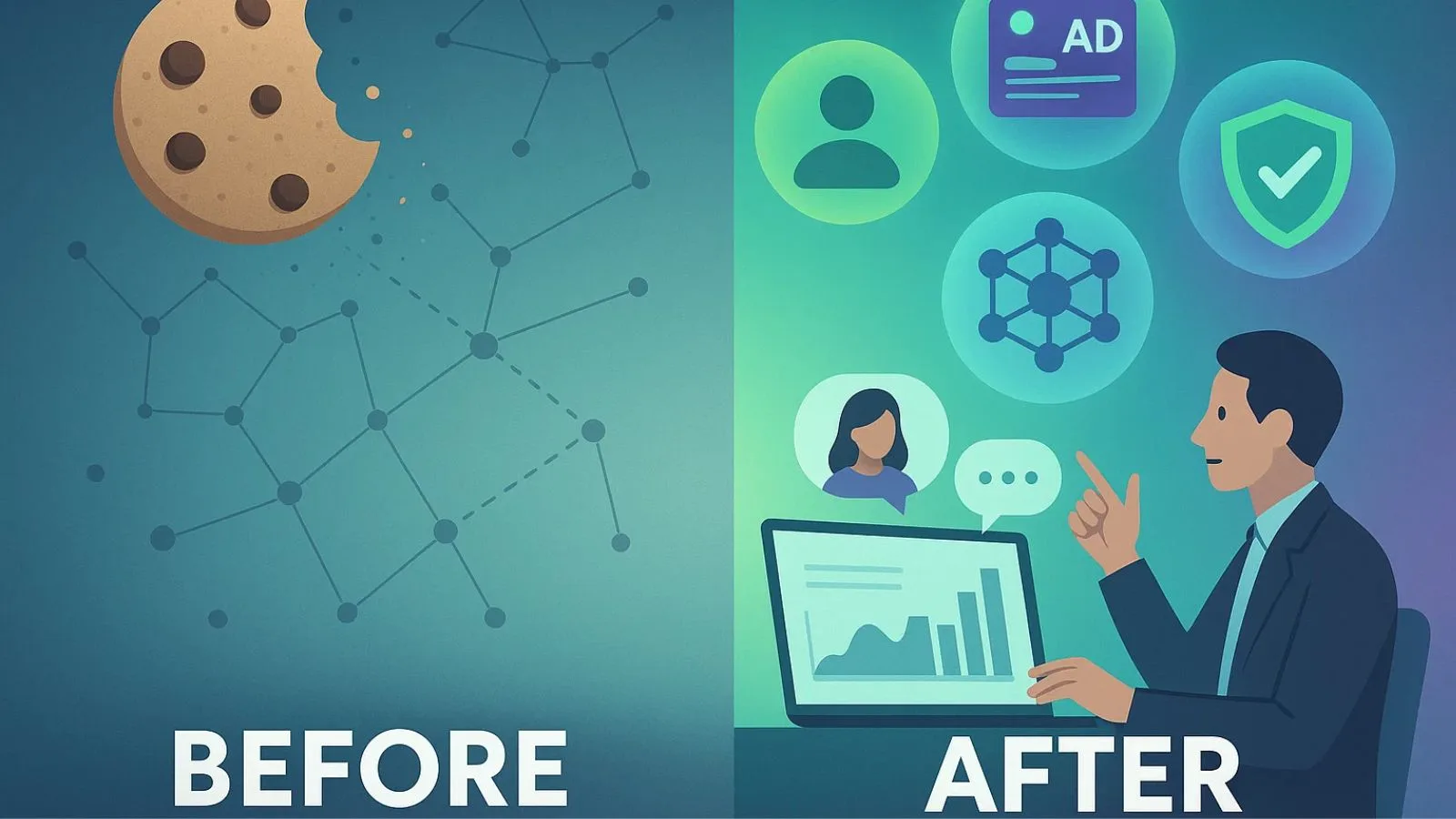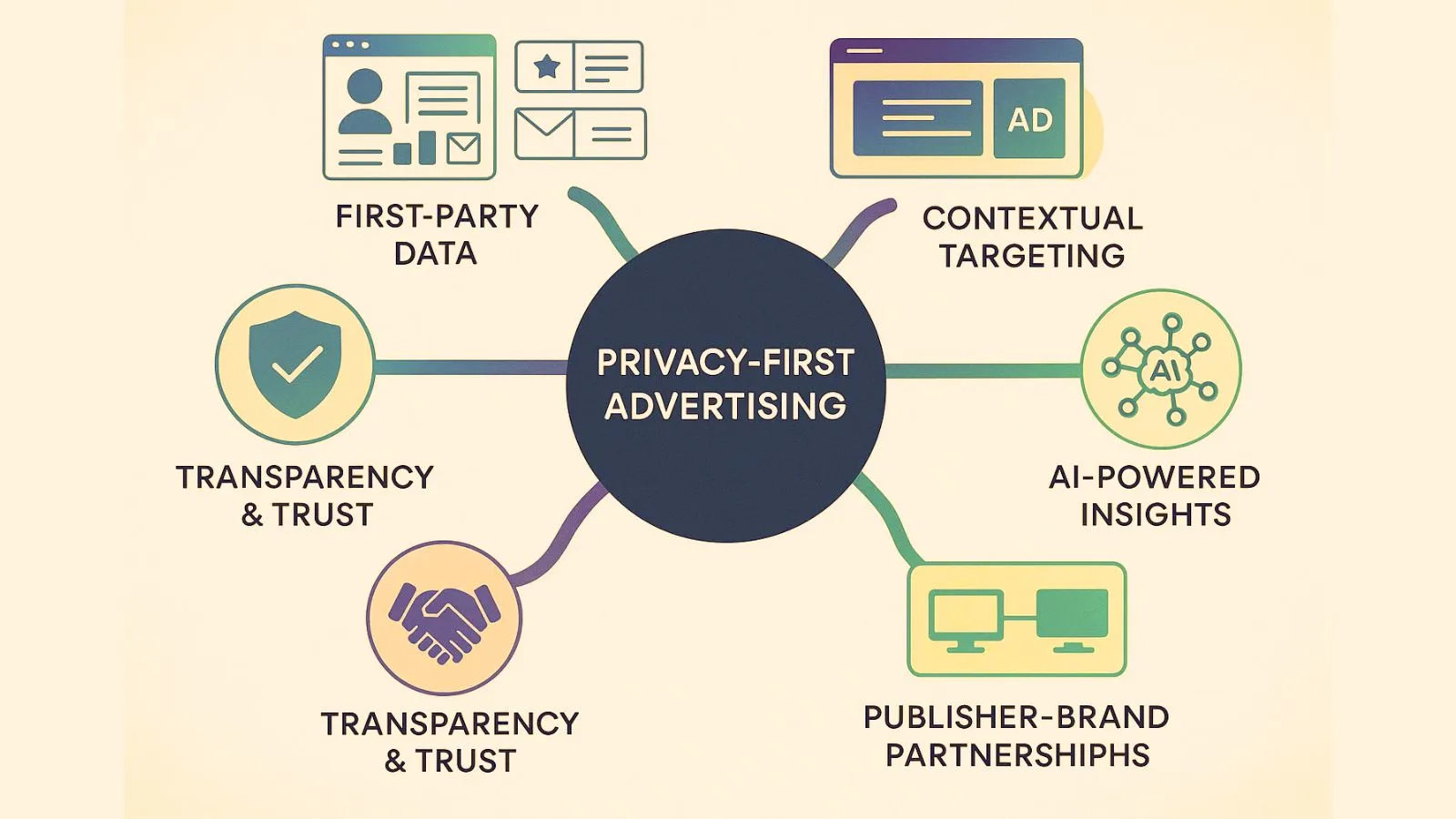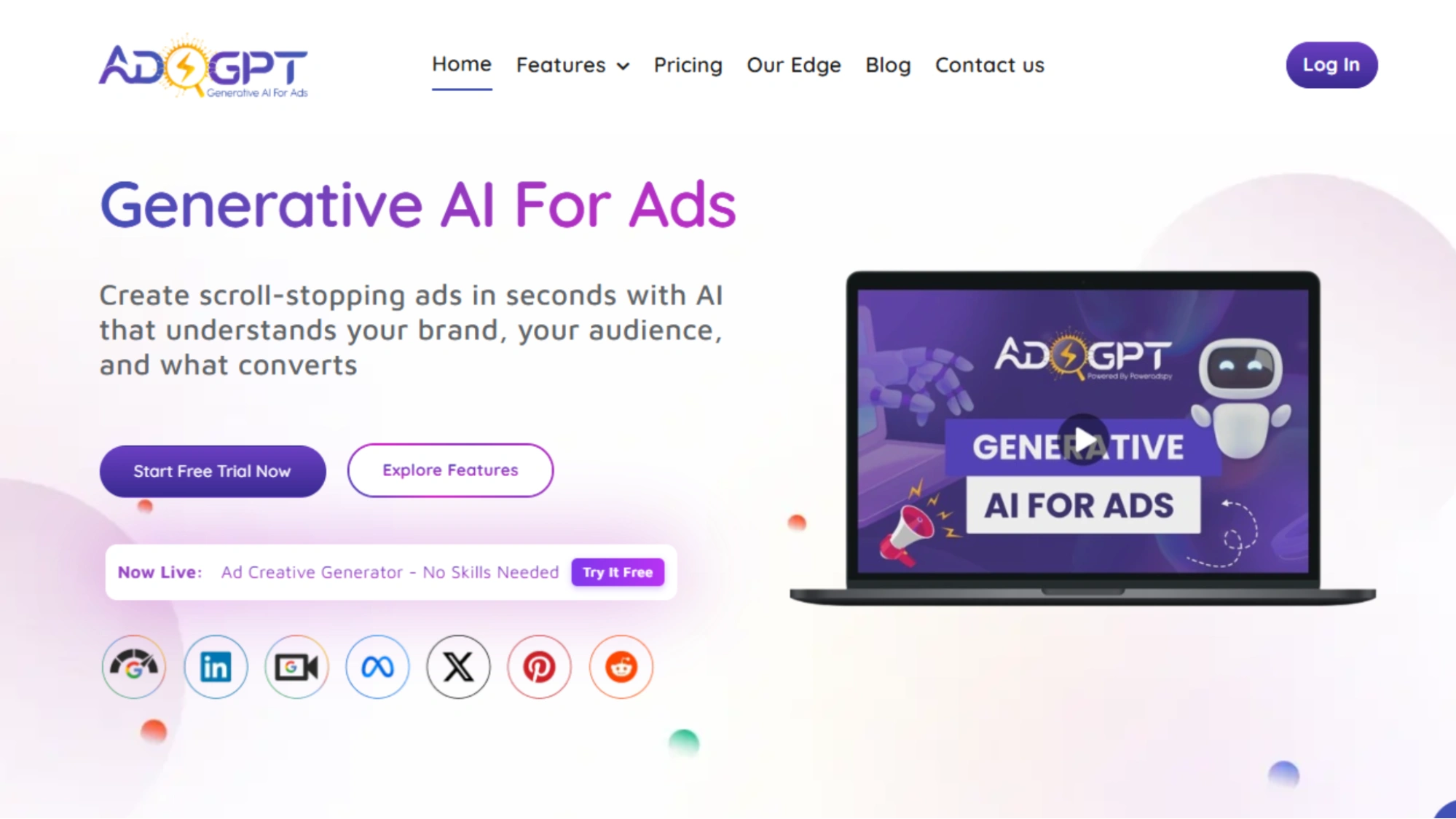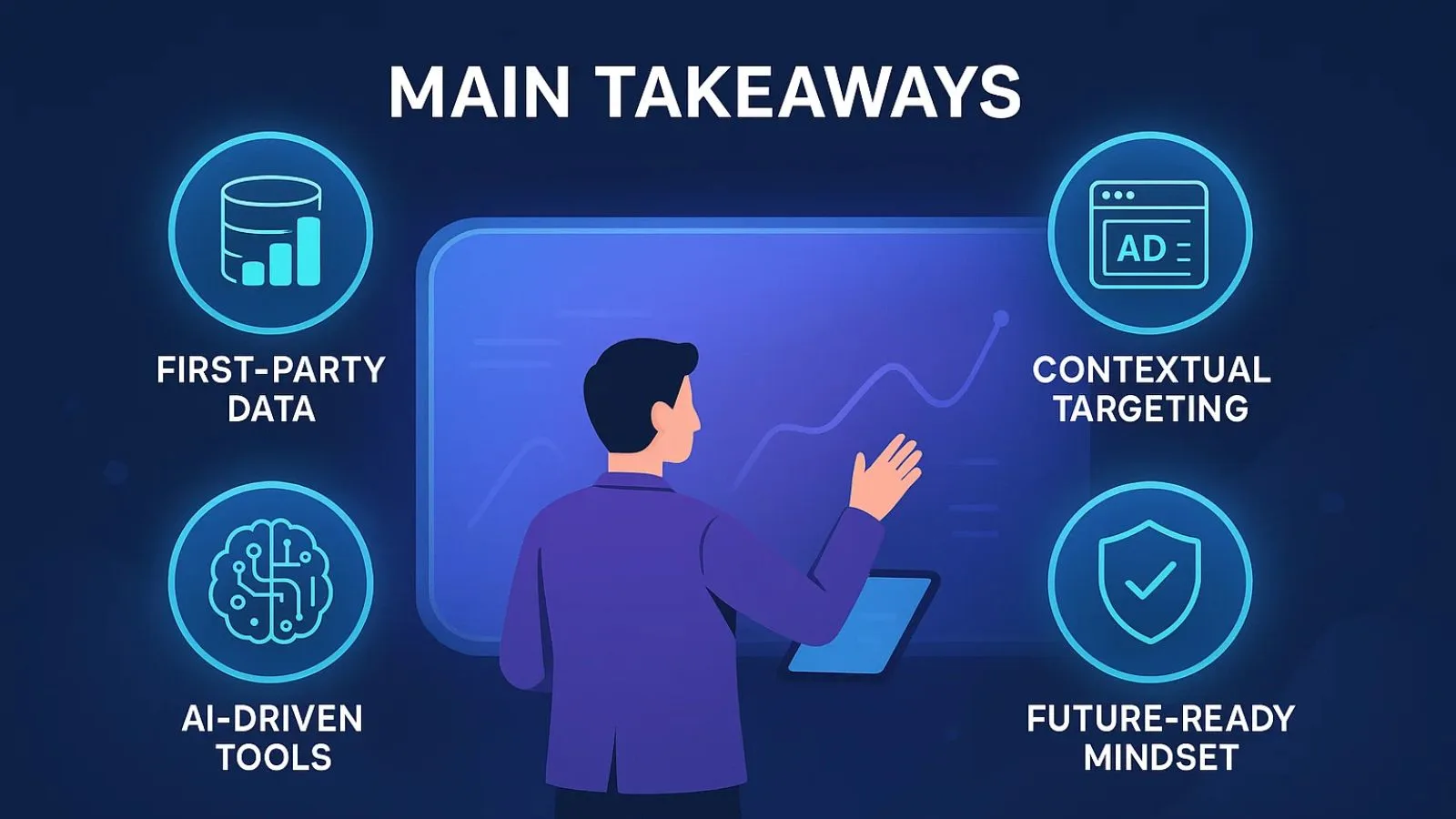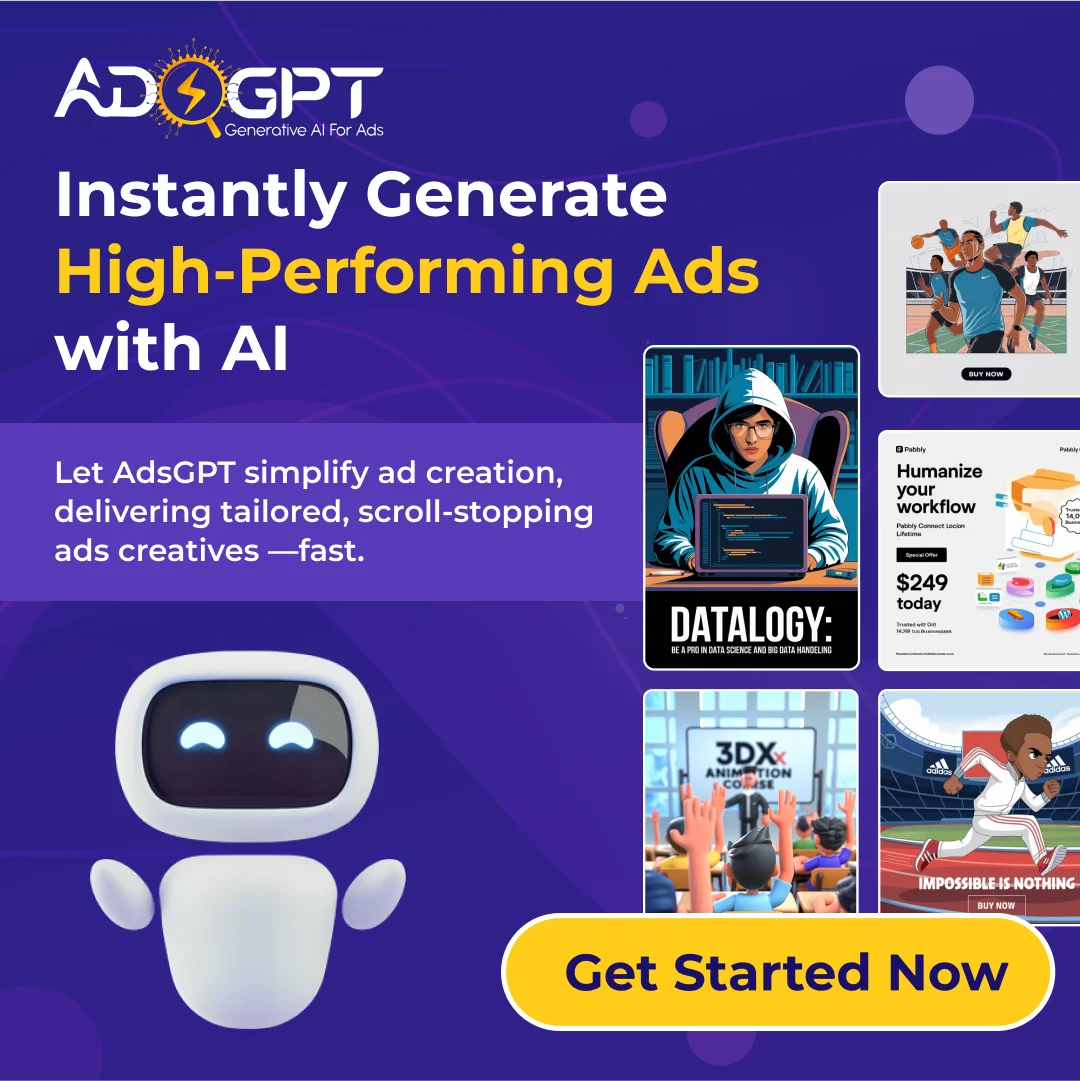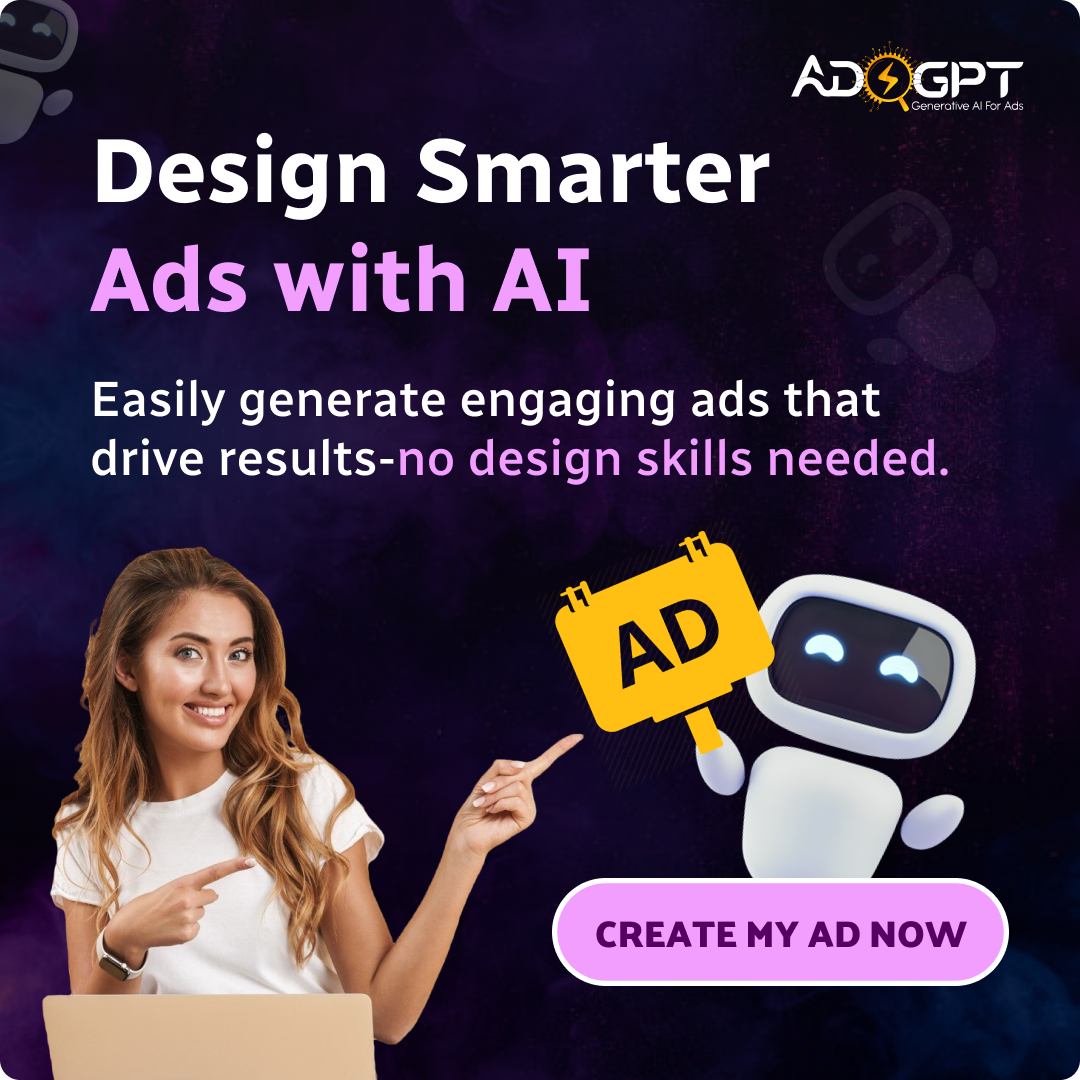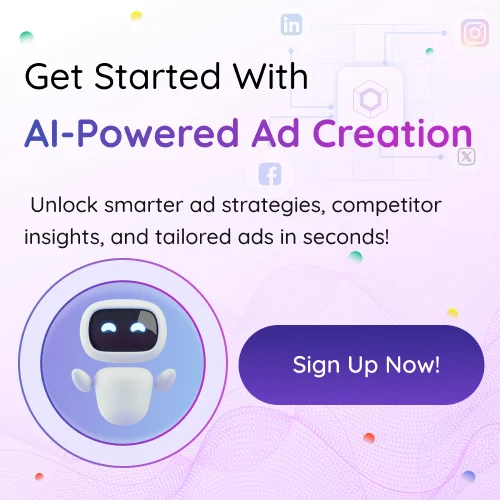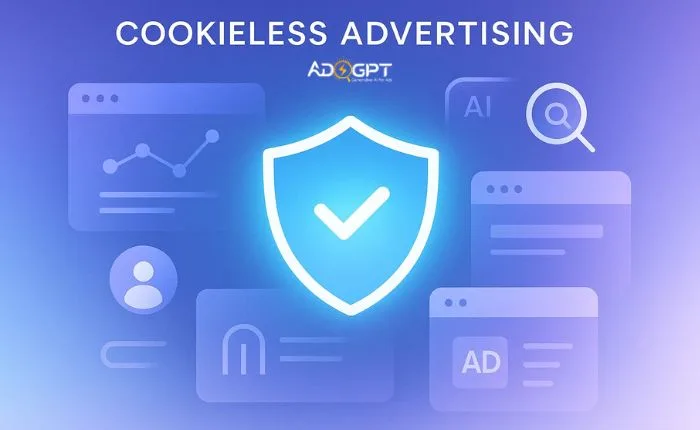
Cookieless advertising is quickly becoming the new reality for marketers and brands worldwide.
For years, digital advertising relied heavily on third-party cookies to track user behavior, deliver personalized ads, and measure performance.
But as privacy concerns continue to rise and regulations tighten, the advertising industry is shifting toward more secure and transparent methods.
This change marks the beginning of a privacy-first digital world where businesses must rethink how they connect with their audiences.
Instead of seeing this transition as a setback, smart marketers view it as an opportunity to innovate.
Cookieless solutions not only protect consumer data but also encourage brands to build trust, embrace first-party data, and use advanced technologies like AI and contextual targeting.
In this blog, we’ll explore what cookieless advertising means, its impact on brands, and how tools like AdsGPT can help businesses thrive in this new era.
Listen Podcast Now!
What Is Cookieless Advertising?
For years, digital marketing relied heavily on third-party cookies to track user behavior, build audience segments, and deliver targeted ads.
However, growing privacy concerns and stricter regulations have given rise to a new approach, cookieless advertising.
Instead of depending on cookies, this method uses privacy-friendly alternatives such as contextual targeting, first-party data, and AI-driven insights to reach audiences effectively.
With cookieless ads, brands can still deliver personalized and relevant campaigns while respecting user privacy.
These ads focus on understanding user intent and context rather than tracking their every move online.
For example, instead of following a user across multiple websites, marketers can place ads based on the content being consumed at that moment or data the user willingly shares.
In simple terms, cookieless advertising ensures businesses can connect with their target audience while building trust in a privacy-first digital environment.
Why Are Cookies Disappearing?
For years, cookies have been the backbone of digital advertising, helping brands track user behavior and deliver targeted ads.
However, growing concerns around data privacy have pushed regulators and tech companies to rethink this approach.
Laws like GDPR in Europe and CCPA in California demand stricter control over how user data is collected and shared.
At the same time, users are becoming more conscious about their online footprint, expecting greater transparency and security.
Major platforms like Google and Apple are also phasing out third-party cookies to align with this shift.
This change is paving the way for cookieless advertising, where businesses rely on alternative methods like first-party data and contextual targeting.
Instead of being seen as a setback, the cookieless future advertising landscape encourages brands to build trust-driven, privacy-first strategies that still deliver meaningful results.
The Future Of Advertising Without Cookies:
The digital landscape is changing rapidly, and cookieless advertising is at the center of this transformation.
As third-party cookies disappear, brands can no longer rely on traditional tracking methods to reach their audiences.
Instead, businesses are shifting toward privacy-first strategies that prioritize user trust while still delivering personalized experiences.
One of the most significant shifts in the Future Of Advertising is the adoption of first-party data.
Companies are building direct relationships with customers through loyalty programs, subscriptions, and engagement-driven campaigns.
At the same time, contextual targeting is making a comeback—matching ads with the content a user is viewing rather than their browsing history.
Artificial intelligence and machine learning are also playing a vital role in shaping the cookieless future advertising model.
Predictive analytics allows marketers to understand customer intent without invading their privacy, ensuring ads remain relevant and effective.
This new era is not about losing personalization but about finding smarter, ethical ways to achieve it.
In short, the future without cookies is not a setback; it’s an opportunity. Brands that adapt early will not only stay competitive but also gain consumer trust in a privacy-first world.
The Impact Of Cookieless Future On Brands & Marketers:
The shift toward cookieless advertising is reshaping how brands connect with their audiences.
For years, third-party cookies made it easy to track user behavior, retarget ads, and measure campaign performance.
Without them, marketers face new challenges in reaching the right people at the right time.
Traditional targeting strategies may no longer deliver the same precision, making it harder to rely on past methods.
However, the impact of cookieless future is not entirely negative. It opens the door for innovation and stronger customer relationships.
Instead of depending on third-party data, brands can lean on first-party data from their platforms, loyalty programs, and customer interactions.
This approach not only helps maintain relevance but also builds greater trust with audiences who value transparency.
Marketers will also see a rise in contextual advertising, where ads are aligned with content rather than individual browsing histories.
Combined with AI-driven insights and predictive modeling, this ensures campaigns remain effective while respecting user privacy.
In short, the cookieless shift challenges brands to rethink their strategies but also provides an opportunity to build more authentic, privacy-first marketing experiences.
Those who adapt early will gain a competitive edge in the evolving digital landscape.
Strategies To Advertise Without Cookies:
As the industry shifts to cookieless advertising, brands must rethink how they connect with their audiences.
The goal is no longer just about tracking users across the web, but about building trust and offering relevant experiences in privacy-friendly ways.
One of the most effective strategies is investing in first-party data.
By collecting insights directly from your customers through CRM systems, newsletters, surveys, or loyalty programs, businesses can create personalized campaigns without relying on third-party cookies.
Another smart approach is contextual targeting, showing ads based on the content a user is actively engaging with.
Instead of following users around the internet, your ads appear in the right context, increasing both relevance and trust.
AI-powered tools also enhance personalization by predicting user intent without breaching privacy.
Transparency plays a big role, too. When customers know how their data is used, they’re more likely to share it willingly.
Building strong publisher-brand partnerships further helps advertisers reach audiences effectively.
Simply put, to advertise without cookies, brands need to focus on ethical data practices, advanced targeting methods, and technology-driven personalization.
By adopting these strategies now, marketers can future-proof their campaigns and thrive in a privacy-first digital era.
AdsGPT: Smarter Way To Run Cookieless Ads:
As the digital landscape shifts, brands need smarter solutions to reach their audiences without relying on third-party cookies.
This is where AdsGPT steps in as a game-changer.
AdsGPT uses advanced AI and contextual targeting to help businesses deliver personalized campaigns while respecting user privacy.
Instead of tracking users across multiple sites, it leverages first-party data, audience insights, and machine learning to ensure ads are shown to the right people at the right time.
What makes AdsGPT stand out is its ability to simplify campaign management.
Marketers can easily create, optimize, and scale campaigns with automation tools that save time and reduce guesswork.
The platform also ensures compliance with global privacy regulations, making it a safe and future-proof option for advertisers.
For brands looking to advertise without cookies, AdsGPT offers the perfect balance between performance and privacy.
Combining contextual intelligence with AI-driven personalization allows you to run high-impact campaigns that resonate with your audience.
In a cookieless future, AdsGPT isn’t just a tool; it’s your competitive advantage.
With its data-smart strategies and automation capabilities, businesses can stay ahead and thrive in a privacy-first world.
Read More:
AI-Driven Advertising: Unlock The Future Of Marketing
Why AI Personalization Advertising Is The Future Of Marketing?
Key Takeaways For Marketers:
The shift to cookieless advertising is not the end of digital marketing; it’s the beginning of smarter, more transparent strategies.
Marketers must embrace first-party data, invest in contextual targeting, and explore AI-driven tools to stay ahead.
The cookieless future is all about building trust while still delivering personalized experiences.
Instead of relying on outdated methods, focus on customer relationships and privacy-first solutions.
By adapting early and leveraging platforms like AdsGPT, brands can thrive in the evolving landscape and turn the future of advertising into a powerful opportunity rather than a challenge.
Conclusion:
The shift to cookieless advertising is not the end of digital marketing; it’s the beginning of a smarter, more privacy-focused era.
Instead of seeing it as a challenge, brands should embrace the cookieless future as a chance to build stronger trust with their audiences.
By leveraging first-party data, contextual targeting, and AI-driven tools, businesses can continue to deliver personalized experiences without compromising privacy.
With solutions like AdsGPT, marketers have the power to adapt and thrive in the future of advertising. The cookieless future is here, and it’s both privacy-first and performance-driven.
FAQ’s:
Q1. What is cookieless advertising?
Cookieless advertising uses contextual targeting and first-party data instead of third-party cookies to reach audiences while respecting privacy.
Q2. Why are cookies disappearing?
Privacy concerns, regulations like GDPR and CCPA, and tech companies phasing out cookies are driving this shift toward privacy-first advertising.
Q3. How can brands advertise without cookies?
Brands can use first-party data through loyalty programs, contextual targeting based on content, and AI-powered insights for transparent customer relationships.
Q4. What impact will this have on marketers?
The cookieless future creates opportunities for stronger customer relationships and AI-driven personalization that builds trust with privacy-conscious audiences.
Q5. How can AI tools help?
AI platforms like AdsGPT use machine learning and contextual targeting to deliver personalized campaigns without tracking, ensuring privacy compliance while maintaining effectiveness.

